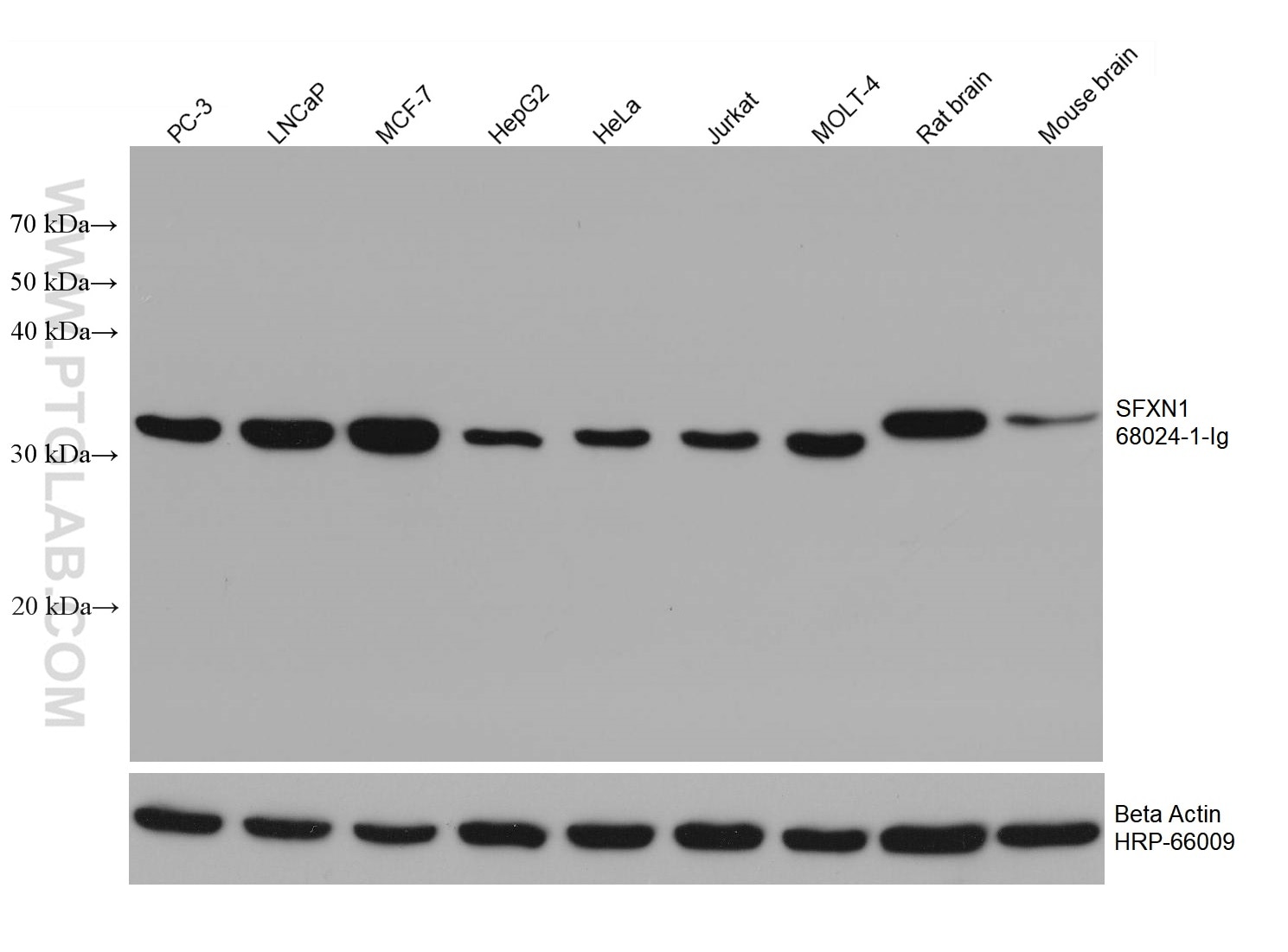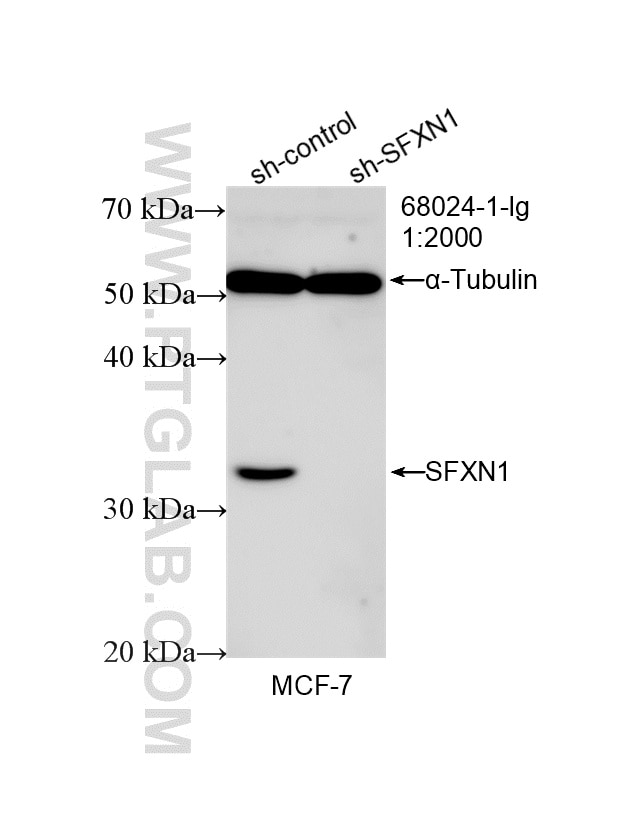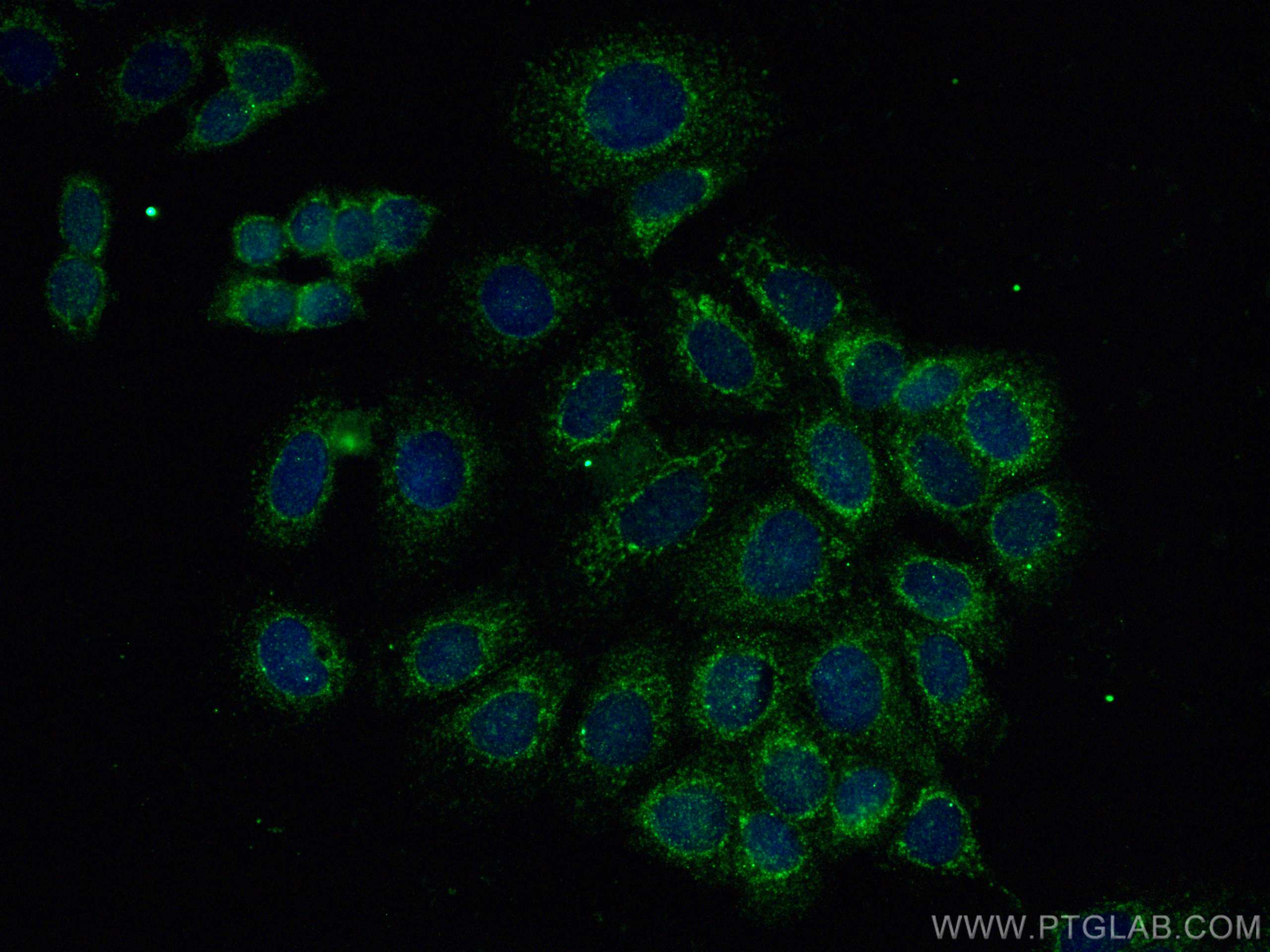Validation Data Gallery
Tested Applications
| Positive WB detected in | PC-3 cells, MCF-7 cells, LNCaP cells, HepG2 cells, HeLa cells, Jurkat cells, MOLT-4 cells, Rat brain tissue, Mouse brain tissue |
| Positive IF/ICC detected in | MCF-7 cells |
Recommended dilution
| Application | Dilution |
|---|---|
| Western Blot (WB) | WB : 1:5000-1:50000 |
| Immunofluorescence (IF)/ICC | IF/ICC : 1:200-1:800 |
| It is recommended that this reagent should be titrated in each testing system to obtain optimal results. | |
| Sample-dependent, Check data in validation data gallery. | |
Product Information
68024-1-Ig targets SFXN1 in WB, IF/ICC, ELISA applications and shows reactivity with human, mouse, rat samples.
| Tested Reactivity | human, mouse, rat |
| Host / Isotype | Mouse / IgG1 |
| Class | Monoclonal |
| Type | Antibody |
| Immunogen |
CatNo: Ag2985 Product name: Recombinant human SFXN1 protein Source: e coli.-derived, PGEX-4T Tag: GST Domain: 1-236 aa of BC020517 Sequence: MILIGRMSAQVPMNMTITGCMMTFYRTTPAVLFWQWINQSFNAVVNYTNRSGDAPLTVNELGTAYVSATTGAVATALGLNALTKHVSPLIGRFVPFAAVAAANCINIPLMRQRELKVGIPVTDENGNRLGESANAAKQAITQVVVSRILMAAPGMAIPPFIMNTLEKKAFLKRFPWMSAPIQVGLVGFCLVFATPLCCALFPQKSSMSVTSLEAELQAKIQESHPELRRVYFNKGL 相同性解析による交差性が予測される生物種 |
| Full Name | sideroflexin 1 |
| Calculated molecular weight | 35.6 kDa |
| Observed molecular weight | 32 kDa |
| GenBank accession number | BC020517 |
| Gene Symbol | SFXN1 |
| Gene ID (NCBI) | 94081 |
| RRID | AB_2918768 |
| Conjugate | Unconjugated |
| Form | |
| Form | Liquid |
| Purification Method | Protein G purification |
| UNIPROT ID | Q9H9B4 |
| Storage Buffer | PBS with 0.02% sodium azide and 50% glycerol{{ptg:BufferTemp}}7.3 |
| Storage Conditions | Store at -20°C. Stable for one year after shipment. Aliquoting is unnecessary for -20oC storage. |
Background Information
SFXN1, the founding member of the SLC56 family, was identified by positional cloning of the mutation in the flexed-tail mouse model with sideroblastic anemia. SFXN1 was recently identified as a mitochondrial serine transporter essential for one-carbon (1C) metabolism, a process in which folate species are generated and used in biosynthetic pathways required for cell proliferation. In HEK293 cells, SFXN1 is the most abundant isoform among the SFXNs.
Protocols
| Product Specific Protocols | |
|---|---|
| IF protocol for SFXN1 antibody 68024-1-Ig | Download protocol |
| WB protocol for SFXN1 antibody 68024-1-Ig | Download protocol |
| Standard Protocols | |
|---|---|
| Click here to view our Standard Protocols |



